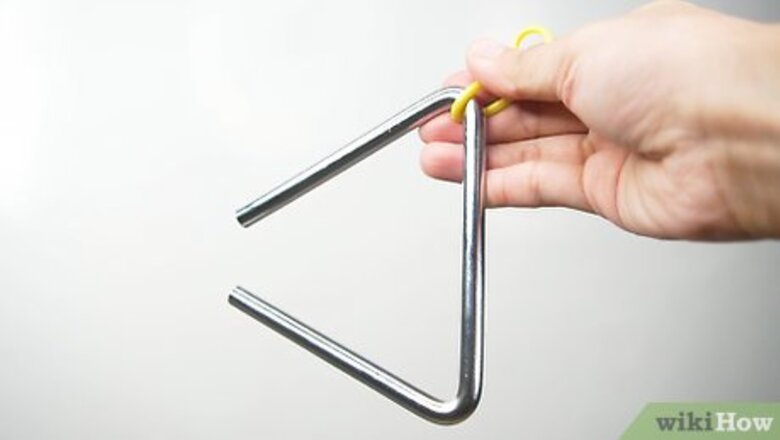
views
X
Research source
and it can be used as a bell to provide a clear high tone, or as a drum to keep a beat. The instrument consists of a metal triangle, which can be played by a variety of beaters and supported either by a string or by a wooden holder. [2]
X
Research source
[3]
X
Research source
Learning to play the triangle is a great way to extend your range as a percussionist.[4]
X
Research source
Choosing and Holding a Triangle
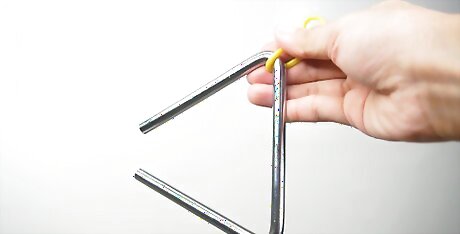
Choose a triangle. Triangle instruments come in different sizes and materials, made of many different kind of metal alloys. Choose a triangle whose sound fits best with the kind of music you will be playing. You can make any triangle very loud or very soft. You can strike the triangle in different places to get a small range of sounds, described as "lighter" or "darker" and "thin" or "full."

Hold the triangle securely. Make sure that the triangle is not in danger of falling while being played. If you are holding it with a string, keep your fingers in an "O" shape, allowing the string and triangle move freely. Alternately, use a triangle holder. A triangle holder is a wooden or metal device that you can use to suspend the triangle.
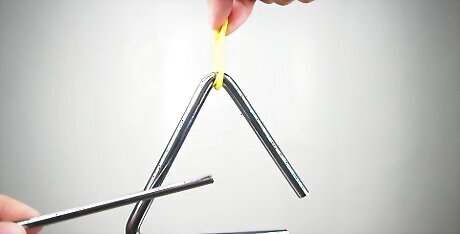
Do not touch the hanging triangle. Whether you use a triangle holder or just your hand, make sure none of your skin is touching the metal of the triangle. Contact between the triangle and your skin interferes and dampens the sound.

Hold triangle with bent arm at, or just below eye-level, about one foot away from your face. In this position, you can see the triangle, your music, and the conductor if you are in a performance. People in the audience will enjoy seeing your performance, so try to smile, especially if you have a triangle solo!
Striking the Triangle
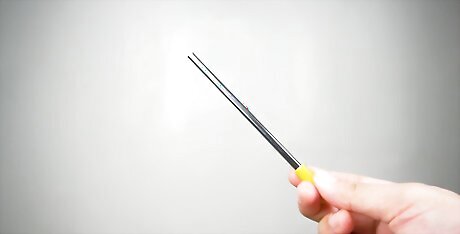
Decide on a beater. Choose a beater that gives you the tone and percussive sound that you want for a specific piece. You can choose thick wood and metal beaters, or progressively thinner cylinders of beaters, which will all give a dynamic range of tones. Depending on the music piece, you may want to use more than one kind of beater in the piece, or even alternate beaters.
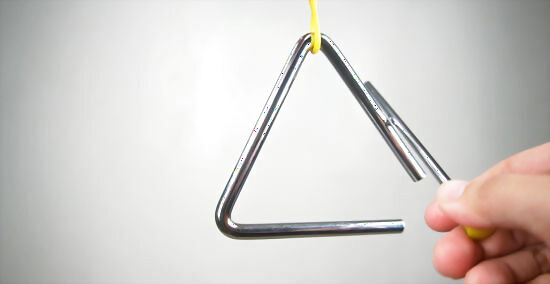
Strike the triangle. You can strike the triangle in at least three places, depending on the sound you prefer. You can strike it on the outside, nearer to the apex, on the inside at the bottom, or on the outside at the lower corner. Keep the beater at a forty-five degree angle to the triangle's side, which produces the full range of lovely overtones. There are a variety of ways to strike the triangle. See Reading and Playing Triangle Music, below.
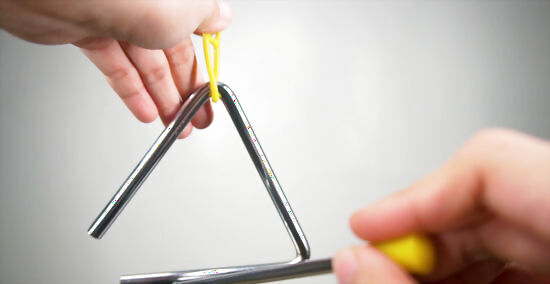
Dampen the sound. Depending on the length of the note, you'll need to dampen (or stop) the ringing tone. Using the fingers not holding the beater(s), press the resonating side of the triangle with two fingers.
Doing a Triangle Roll
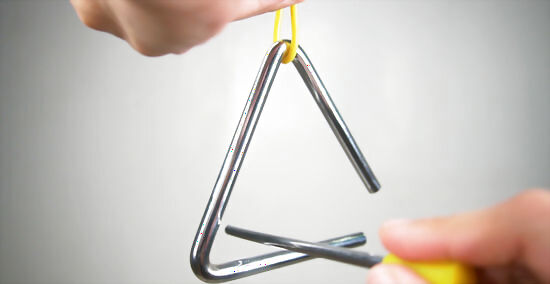
Do a two-sided triangle roll. A two-sided triangle roll is created by beating two adjacent sides of the triangle from the inside. Take the beater and hit the top and bottom sides, or the two sides of the triangle, with an even but rapid back and forth motion. Make sure to perform this action with an even, rhythmic motion. For "full" sound, make sure the beater is at a forty-five degree angle when it hits the triangle.

Do a three-sided triangle roll. A three-sided triangle roll is created by beating all three sides once each in a rapid circular motion. Take the beater and hit each of the three sides in the same order, very quickly, in a rhythmic pattern.
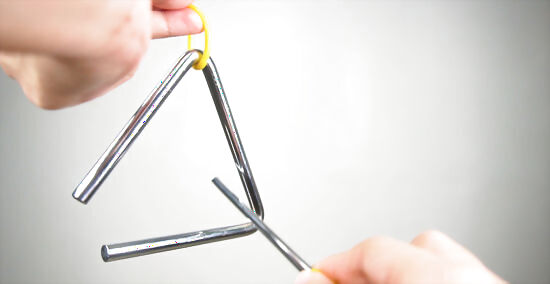
Do a roll softly, loudly, and at all volumes in between. Like other percussion instruments, the ability to do a roll both softly and loudly, and vice versa, but in rhythm, is an important skill.
Reading and Playing Triangle Music
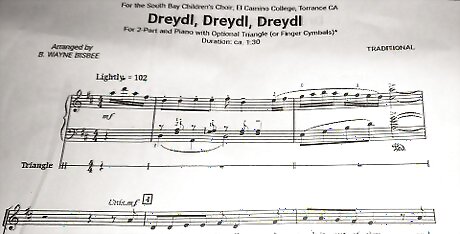
Learn to read triangle notes. Music for the triangle is written on the percussion staff, often with triangular shaped notes, but is sometimes written with regular music notes. Triangles have an indefinite pitch, the notes will appear on the same line often as some of the other such instruments, such as bass drum and cymbal. The same note values apply for the triangle, i.e. a whole note, half note and quarter note, eighth notes, etc. Playing the triangle gets harder the shorter the notes are, so this is a really important skill to master.
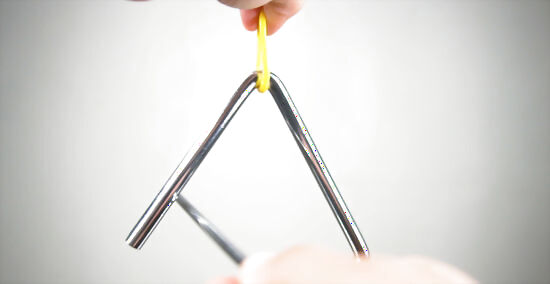
Practice striking the triangle in rhythmic patterns. Being able to read triangle music well requires hitting the triangle with the correct force and rhythm consistently as marked within the music and/or by the conductor.
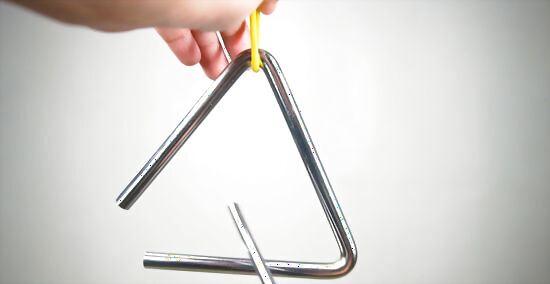
Learn to strike with differing accents. In music, an accent is how strongly you hit the note, and for a triangle, you'll need to learn a strong accent (>), a medium accent (-), and a staccato accent (•). A strong accent is created by hitting the triangle with the beater very hard and very fast. A medium accent is created by hitting the triangle with the beater with moderate force, and very fast. A staccato accent is created by hitting the triangle with moderate force and even more quickly and dampening the sound almost immediately after striking the triangle.
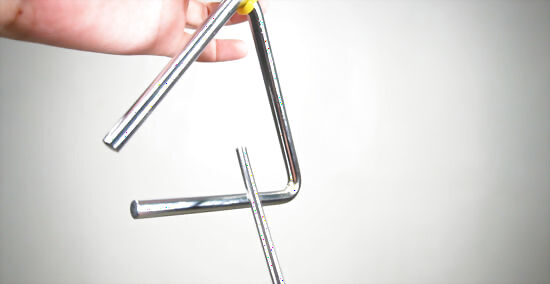
Learn to strike with medium sound, and with loudness and softness. Even though they are percussion instruments, playing a triangle often involves adjustments to the loudness or softness of the tone. Increase force when striking the triangle, and perhaps even choose a different beater, to increase the loudness of the tone to strong (forte), or very strong (double forte), and then strongest (fortissimo). Decrease force when striking the triangle, and perhaps even choose a different beater, to decrease the loudness to soft (piano), very soft (double piano), and then softest (pianissimo).

Practice grace notes. Graces notes are notes played in a specific rhythm before the first note in a musical measure. Playing grace notes on a triangle is easier if you suspend the triangle on a music stand with clips and play with two matched beaters.




















Comments
0 comment